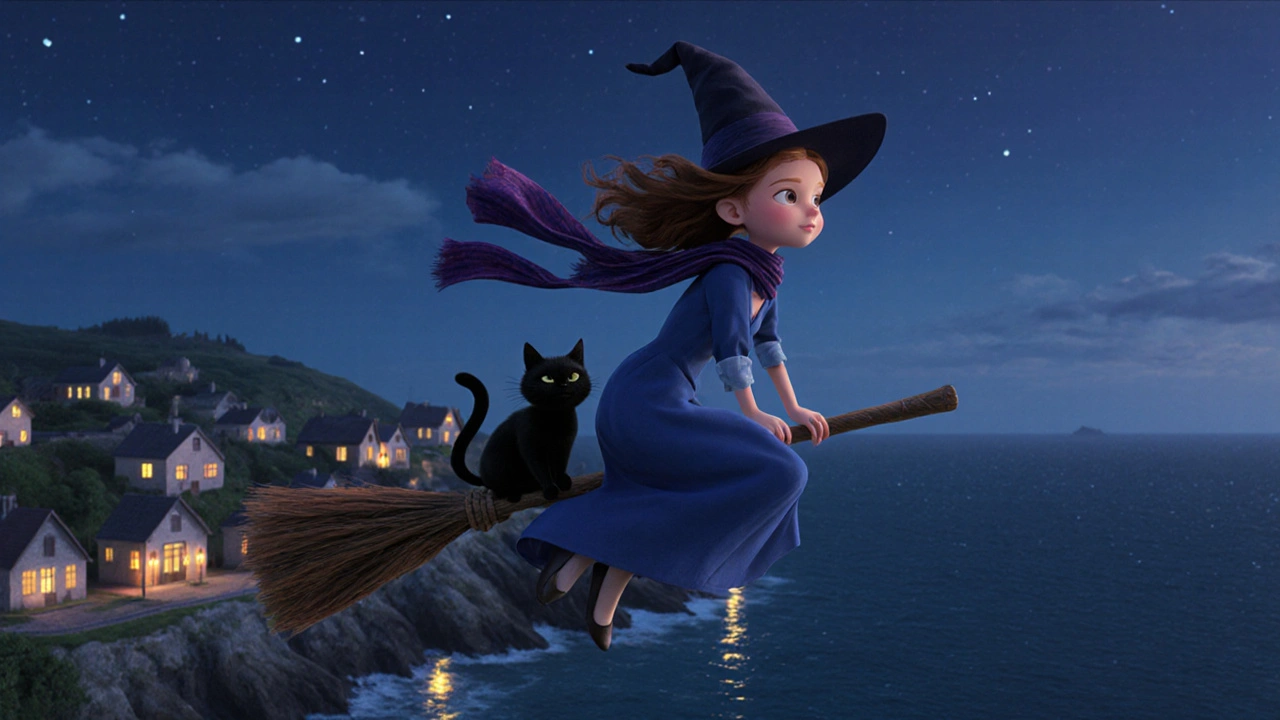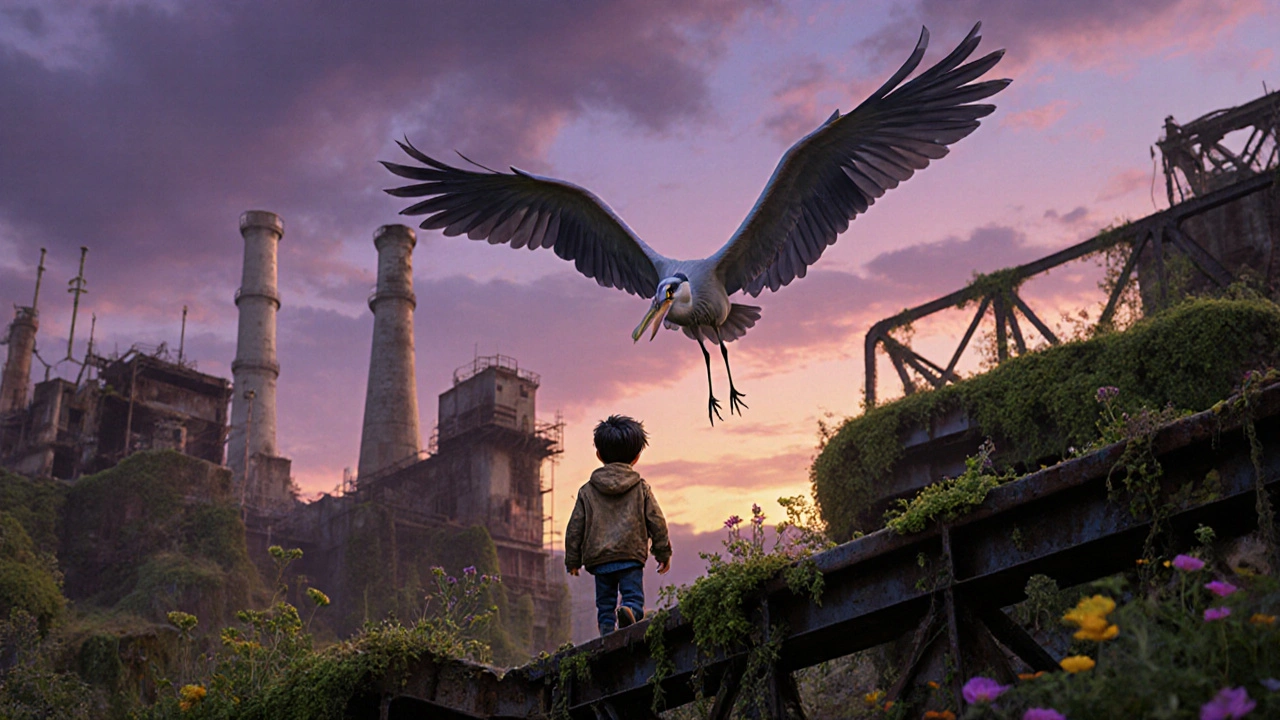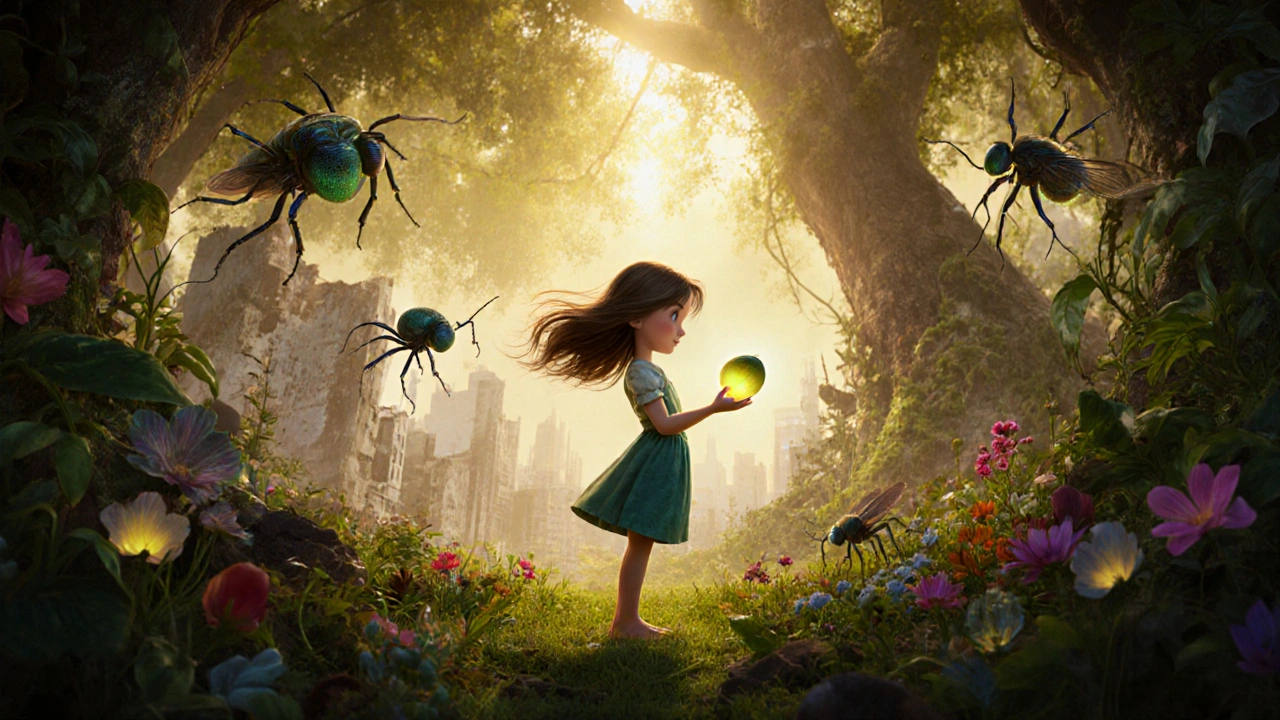Hayao Miyazaki didn’t just make animated movies. He built entire worlds where forests breathe, rivers remember, and flying isn’t just a trick of animation-it’s a kind of salvation. Over five decades, his films have become more than entertainment. They’re quiet revolutions wrapped in hand-drawn clouds and wind-swept hair. At the heart of every Miyazaki story are two powerful ideas: the sacredness of nature and the freedom of flight. These aren’t just themes. They’re the soul of his work.
Nature as a Living Spirit
Most environmental stories paint humans as villains and nature as innocent victims. Miyazaki refuses that simple divide. In Nausicaä of the Valley of the Wind (1984), the earth is poisoned by human industry. A toxic jungle grows over ruined cities, filled with giant insects and spores that kill anyone who breathes it. But here’s the twist: the jungle isn’t evil. It’s healing. Nausicaä discovers the plants are filtering poison from the soil, slowly restoring balance. The real enemy isn’t the jungle-it’s human fear, greed, and the refusal to change.
This isn’t science fiction. It’s Shinto. In Japanese tradition, every tree, river, and rock holds a spirit called a kami. Miyazaki doesn’t talk about climate change in terms of carbon emissions. He talks about polluted rivers that cry out as stink spirits in Spirited Away. Chihiro’s job is to clean the spirit, pulling out bicycles, oil drums, and old furniture. That scene didn’t come from a documentary. It came from Miyazaki watching Tokyo’s rivers choked with trash in the 1990s. He didn’t need graphs or statistics. He needed a child to see the truth.
Princess Mononoke (1997) takes this further. Lady Eboshi runs a town that cuts down forests for iron. She’s called a villain. But she also gives refuge to lepers and sex workers-people society threw away. Her town saves lives. Yet her machines kill the forest spirits. Miyazaki doesn’t ask you to pick a side. He asks you to hold both truths at once: progress and destruction, care and cruelty. The film’s ending isn’t victory. It’s compromise. Ashitaka and San walk away from each other-not because they hate each other, but because humans and nature can’t live as one. They can only learn to live beside each other.
Flight as Liberation
Flight shows up in nearly every Miyazaki film. Not as a special effect, but as a feeling. In Castle in the Sky (1986), Sheeta floats down from the sky with a crystal, and you don’t wonder how she’s flying-you just believe it. There are 42 flying scenes in that movie alone, each one longer, slower, and more peaceful than the last. It’s not about speed. It’s about silence. When characters fly, they escape the noise of the world. They leave behind war, bureaucracy, and fear.
In Kiki’s Delivery Service (1989), a 13-year-old witch flies on a broomstick. Her flight isn’t magic-it’s her identity. When she loses her ability to fly, she loses her confidence. Her journey back isn’t about fixing a spell. It’s about remembering who she is. Miyazaki spent six months animating just her hair moving in the wind. Why? Because flight isn’t just movement. It’s freedom. And freedom, for young girls in a world that tells them to be quiet, is revolutionary.
Porco Rosso (1992) turns flight into rebellion. A World War I pilot, cursed to look like a pig, flies alone over the Adriatic Sea. He refuses to join fascist armies. His plane is his protest. His flight is his refusal to become part of the machine. In Howl’s Moving Castle, the castle itself flies, a giant walking beast with smokestacks and wings. It’s not a weapon. It’s a home. And when Howl flies, he’s not escaping danger-he’s escaping the idea that he must be a hero.
Even in The Wind Rises (2013), flight carries tragedy. Jiro Horikoshi dreams of designing beautiful airplanes. He wants to build something that glides like birds. But his planes become bombs. The opening sequence shows him flying over green fields, smiling. Later, he watches his creations destroy lives. Flight here isn’t just freedom. It’s responsibility. It’s the cost of creation.

Myth, Not Morality
Miyazaki isn’t trying to teach you how to save the planet. He’s not giving you a checklist. He’s telling you a myth. And myths don’t have answers. They have feelings.
Some critics say his films are too nostalgic. They ignore Japan’s own industrial pollution in the 1960s. Others say he’s too soft on nature, ignoring how humans have always shaped the land. But Miyazaki never claimed to be an ecologist. He once said, “I don’t want to be considered an ecologist, so I puff away on my cigarettes.” He knew the contradiction. He lived it.
His films work because they don’t simplify. In Nausicaä, the people who destroy the forest are also the ones trying to survive. In Spirited Away, the bathhouse is a place of exploitation-and wonder. The spirits are dirty, but they’re also beautiful. The world is broken, but it’s still worth saving.
That’s why children respond to his films so deeply. A 2019 University of Tokyo study found kids who watched Nausicaä showed 23% more ecological empathy than those who didn’t. They didn’t learn facts. They felt connection. They saw the forest as alive. And that’s the point.

Why His Films Still Matter
When Spirited Away won the Oscar in 2003, it wasn’t just a win for animation. It was a win for a different way of seeing the world. In 2023, after the IPCC climate report, Netflix saw a 40% spike in Ghibli film views. People weren’t just watching. They were searching for meaning.
UNESCO found that after schools in Brazil showed Princess Mononoke, student participation in Amazon conservation programs rose by 17%. Not because the film had a lesson plan. But because it made kids feel the forest was worth fighting for-not because it was useful, but because it was alive.
Even today, at 83, Miyazaki still draws every frame by hand. He’s not chasing trends. He’s not making sequels. He made The Boy and the Heron (2023) as his final film, and it’s full of the same questions: What do we owe the earth? Can we change? Is there still hope?
The heron in the film doesn’t speak. It doesn’t preach. It just flies. And when the boy follows it, he’s not escaping. He’s stepping into a world where the old rules don’t apply. Where nature isn’t something to fix. It’s something to listen to.
What Miyazaki Teaches Us
He doesn’t tell you to recycle. He doesn’t tell you to protest. He shows you a girl standing in a toxic jungle, touching a seed-and believing it can grow. He shows you a boy flying over a ruined world, not to conquer it, but to understand it.
His films say: You don’t need to save the planet to be part of its healing. You just need to see it. Really see it. And sometimes, that’s enough.
Why is Hayao Miyazaki considered an environmental filmmaker?
Miyazaki’s films consistently show nature as alive, sacred, and wounded by human actions. He doesn’t use statistics or slogans-he uses myth. In Nausicaä, the toxic jungle cleans the earth. In Spirited Away, a river spirit is polluted with human trash. His stories don’t blame people outright-they show how greed, fear, and ignorance harm the world. He draws from Shinto beliefs, where nature spirits exist in every tree and stream, making environmental care a spiritual act, not just a political one.
What does flight symbolize in Miyazaki’s films?
Flight in Miyazaki’s films represents freedom-from societal expectations, from war, from grief, and from the weight of human mistakes. Characters like Kiki, Sheeta, and Porco Rosso gain agency through flight. It’s not about speed or power. It’s about perspective. When someone flies, they see the world differently. They see the forests, the rivers, the cities-not as resources, but as places with their own life. For young female protagonists especially, flight is their first real act of independence.
Is Miyazaki against technology?
No. He’s against technology used without care. In Princess Mononoke, Lady Eboshi’s ironworks give safety and dignity to outcasts. But her machines destroy the forest. Miyazaki doesn’t hate industry-he hates blind progress. In The Wind Rises, Jiro designs beautiful planes because he loves flight. But those same planes become weapons. The tragedy isn’t technology itself-it’s losing sight of why we build things in the first place.
Why do Miyazaki’s films resonate with adults today?
Because they don’t offer easy answers. In a world of climate anxiety, political division, and digital overload, Miyazaki’s films offer something rare: quiet honesty. They show a world broken but still beautiful. They don’t tell you to fix everything-they show you how to care. That’s why adults, especially those facing ecological despair, find comfort in his work. They’re not escapist. They’re healing.
Did Miyazaki really retire multiple times?
Yes. He announced his retirement after Princess Mononoke in 1997 and again after The Wind Rises in 2013. But he always returned. He says he can’t stop drawing. At 83, he still works daily at Studio Ghibli, hand-drawing frames for The Boy and the Heron. He doesn’t retire because he’s tired-he retires because he feels he’s said enough. But the stories keep coming back. He says he’s not making films for audiences. He’s making them for himself.

